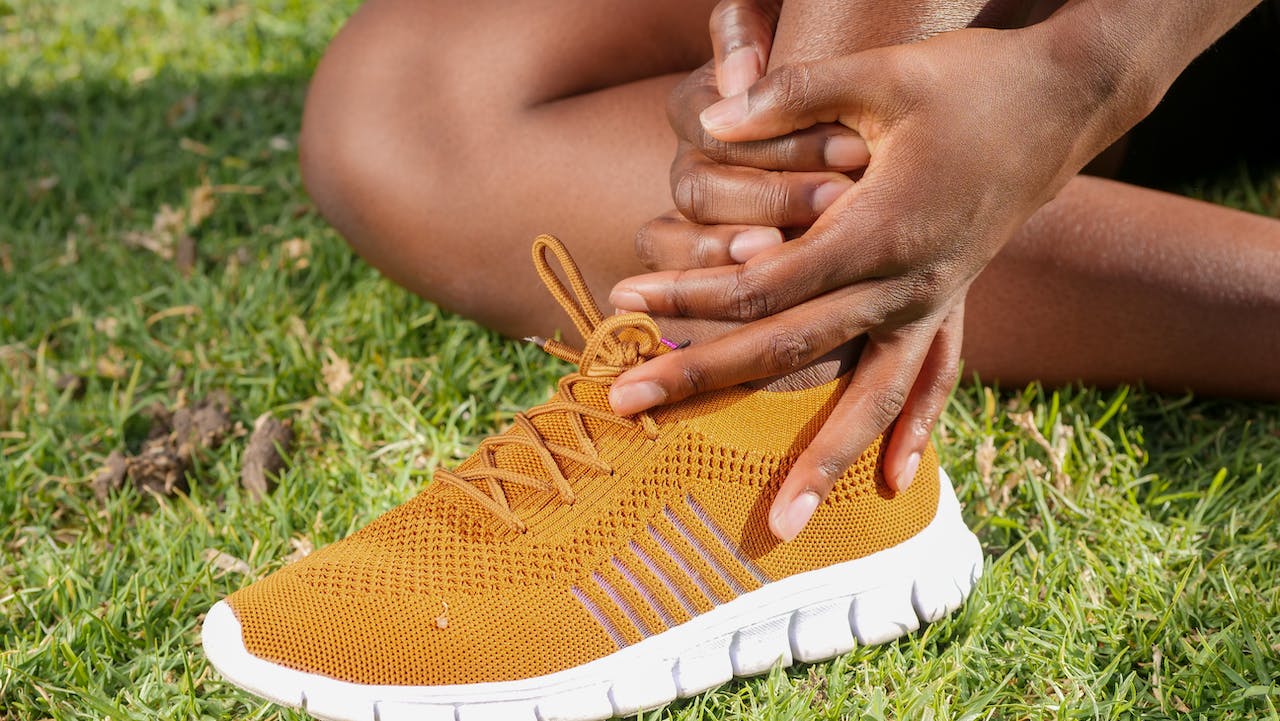
An ankle injury can be a small setback, inconveniencing our daily activities, or it can be a more substantial hurdle, like impeding the performance of a world-class athlete. Whatever your situation might be, it’s essential to rejuvenate the strength, stability, and flexibility of the injured ankle for a seamless return to your routine or sports.
This blog aims to guide you through some of the best exercises and methods for ushering in an effective recovery from ankle injuries.
Please note, these recommendations should not replace the professional advice of a medical expert. Always consult a professional before engaging in new or additional physical activity, especially when recovering from injury.
1. RICE Method
The Rest, Ice, Compression, and Elevation (RICE) method is a tried-and-tested initial approach to treating ankle injuries, particularly sprains. The process is as follows:
- Rest: Keep your injured ankle at rest to prevent further harm.
- Ice: Apply ice to your ankle for 15 to 20 minutes every 2-3 hours to reduce swelling.
- Compression: Elastic bandages or braces can be used to compress and stabilize the injured ankle.
- Elevation: While resting or sleeping, keep your foot elevated higher than your heart level to decrease swelling.
2. Ankle Pumps
Once you’ve controlled the initial swelling and your doctor or physical therapist gives you the green light, you can start the ankle pumps.
- Lie down on the floor and stretch out your legs.
- Point your toes upwards and then downwards.
- Repeat the process for 10-20 times, conducting three sets per day.
3. Marble Pickups
This exercise improves your ankle’s flexibility and strength.
- Sprawl marbles over your floor.
- Using your toes, try to pick up the marbles and then release them.
- Do 10-15 marble pickups and repeat it 2-3 times a day.
4. Ankle Alphabet
This simple yet effective exercise helps to enhance your ankle’s range of motion.
- Sit in a comfortable chair and stretch your leg forward.
- Move your ankle to trace the alphabet from A to Z.
- Do the exercise twice daily until your ankle’s mobility improves.
5. Towel Stretches:
This exercise helps improve the flexibility and range of motion in your ankle.
- Sit on the ground with your legs extended in front of you.
- Loop a towel around the ball of your affected foot.
- Holding the ends of the towel, gently pull towards you, keeping your knee straight.
- Hold for 15-30 seconds. Repeat 10 times, ideally twice a day.
6. Balance and Control Exercise:
This can help enhance the proprioception of your ankle, which often gets impacted after an injury.
- Stand straight, then lift your affected foot off the ground, balancing on your unaffected foot.
- Maintain the position for as long as possible, aiming for at least 30-60 seconds.
- Repeat 5 times, twice a day.
7. Ankle Strength Exercise:
Strengthening the surrounding ankle muscles can be very beneficial for a full recovery.
- While seated, wrap an elastic resistance band around your foot, holding the ends in your hand.
- Push your foot against the band as if you’re pushing on a gas pedal.
- Repeat for 10-15 reps, ideally thrice a day.
8. Calf Raises:
Once you’re comfortable weight-bearing, calf raises can be an excellent way to regain strength and control.
- Stand upright and slowly raise your heels until you’re standing on your tiptoes.
- Slowly lower yourself back to the ground.
- Repeat 10-15 times, for 2-3 sets.
9. Calf and Heel Stretches:
Stiff calf muscles can lead to ankle injuries. Here are steps to do calf and heel stretches:
- Stand upright facing a wall.
- Your right leg should be extended behind with the foot flush on the floor while the left is bent at the knee in front.
- Move your hip forward until you feel a stretch in your right calf.
- Switch to the other side after holding for 20-30 seconds.
Always remember to warm up your body before these exercises.
10. Adopt a Balanced Diet
In addition to exercises, it’s vital to follow a balanced diet during recovery. Consuming foods rich in vitamins C and D, calcium, proteins, and omega-3 fatty acids can stimulate the healing process.
11. Take Adequate Rest
Overdoing exercises can cause more harm than good. It’s crucial to listen to your body and take ample rest to expedite recovery.
12. Seek Professional Guidance:
It is always recommended to consult with a physiotherapist or sports injury specialist when recovering from an ankle injury. They can guide you through creating a custom program suited to your specific needs and recovery timelines, monitor your progress, and make adjustments when necessary.
Remember, recovery from an ankle injury is a gradual process. Patience, diligence, and a positive mindset synthesize into the perfect healing formula. Keep going and stay strong – you’ll return to your regular pace before you know it!



